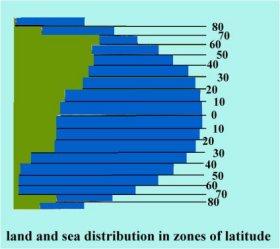Plants use CO2 from the atmosphere to grow. It follows that more CO2 will promote more growth. That is the gist of the 'plants love CO2' theory. But is the theory valid?
In a recent article I argued that Plants Can't Sequester Excess CO2.
In this article I examine the matter further.
If it is true that plants will adapt to rising CO2 levels by absorbing more CO2 then there are logical consequences to be expected. One way to test a theory is to show the expected consequences of the theory and compare that with observed experimental data. Let us do that with the theory that plants can, or do, or will make use of excess CO2.
The global atmospheric CO2 cycle.
An oversimplification: animals breathe in oxygen and breathe out carbon dioxide. Plants breathe in carbon dioxide and breathe out oxygen. The two mechanisms are in balance.
The actual distributions of O2 and CO2 over time are more complex. Some animals hibernate in winter. Some plants die off or lose their leaves in winter. Many plants slow or stop their CO2 uptake in winter. Northern winter coincides with southern summer, so you might expect an average balance over the course of a year. You would expect wrongly.
In a recent article - Understanding Climate : #6 - Hypsography - I showed that there is much more land in the northern hemisphere than in the southern one.

The northern and southern seasons do not completely offset each other. The northern hemisphere is dominant in its effects on atmospheric CO2 and O2.
Expected observations of balanced CO2 levels
Because there is more land area in the northern hemisphere we can reasonably expect more green plants. For 6 months of the year the northern hemisphere animals produce more CO2 than can be taken up by still-active plants. The CO2 level climbs to a peak. Then summer kicks in and plants begin to take up more CO2 than the animals are producing. The plants overtake the animals and the CO2 level drops to a minimum. This cycle repeats every year, as roughly indicated in the next diagram.

There is some jitter in the CO2 levels. It may happen that CO2 is released by a volcano or by some other intermittent occurence. The peak CO2 goes up - to the green line in the diagram - but then comes down as plants react to the temporary excess CO2 by absorbing it.
That seems reasonable. There is some slack in a plant's ability to take up CO2. Excess atmospheric CO2 is soon removed by plants and the level drops to whatever is 'normal' for summers end in that geological era.
The 'slack' doesn't allow CO2 levels to drop to zero. The physical chemistry of CO2 uptake loses efficiency as CO2 levels fall. Also, the plants only have 6 months to absorb CO2. There will be some average minimal level of CO2 at the start of every winter. The real waveform would not be a sawtooth, but the diagram serves to show a basic principle: CO2 levels start at a summer low, climb to a winter high and then fall again. According to the theory that plants will remove excess CO2, the long term trend for CO2 levels is a horizontal line.
Expected observations of rising CO2 levels
The theory under investigation suggests that plants will - presumably without limit - absorb any excess CO2. More CO2 stimulates plant growth. It follows logically that as CO2 levels rise, the amount of CO2 uptake will increase. This will show up in graphs. Each increment of CO2 will show up as a higher end of winter value, and each summer at least some of that excess will be taken up. Whether the plants keep pace with rising CO2 or not, the difference between the high and low CO2 values will show a trend towards annual increase. The sawteeth will get bigger.

The theory that plants will absorb whatever CO2 is available 'predicts' that, with rising inputs of atmospheric CO2, measurements of atmospheric CO2 will show a trend of ever greater differences between winter highs and summer lows. If the plants fail to keep pace with changes in CO2 levels, the graph will look something like the one below.

Discussion:
The 'plants love CO2' theory states that CO2 is good for plants and that plants will thrive on - i.e. absorb - excess CO2.
If the theory is broadly valid then graphs will show an annual increased uptake trend - or at least a decadal increased uptake trend. The difference between annual high and annual low atmospheric CO2 levels - the measure of global CO2 uptake - will increase, but mean CO2 levels will continue to rise.
If the theory is completely valid then graphs will show a trend towards ever higher seasonal CO2 levels but the lower CO2 level will show no overall long-term upward trend.
If the theory is not valid, then as CO2 levels trend upwards, both annual low and annual high CO2 levels will show a matching trend.
Is the 'plants love CO2' theory valid?
There follows a graph of actual measured annual high and low CO2 levels. Measurements have been made to a consistently high standard at one geographical location and at a constant altitude.
We have confidence that the CO2 measurements made at the Mauna Loa
Observatory reflect truth about our global atmosphere. The main reasons
for that confidence are:
1. The Observatory near the summit of Mauna Loa, at an altitude of
3400 m, is well situated to measure air masses that are representative
of very large areas.
2. All of the measurements are rigorously and very frequently calibrated.
3. Ongoing comparisons of independent measurements at the same site
allow an estimate of the accuracy, which is generally better than 0.2
ppm.
http://www.esrl.noaa.gov/gmd/ccgg/about/co2_measurements.html





Comments